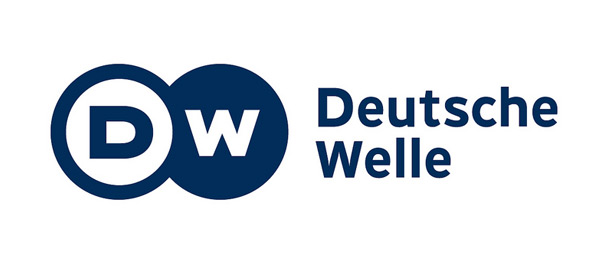 By Oh Kyu-wook (596story@heraldcorp.com). Technology helps expand access to learning, reduce educational gap
By Oh Kyu-wook (596story@heraldcorp.com). Technology helps expand access to learning, reduce educational gap
Economics professor Lee Jun-koo has been highly popular among laypersons scared of a labyrinth of jargon, curves and indices that block their access to the discipline.
The renowned practitioner of behavioral economics mixes everyday affairs into the principles of demand and supply, asymmetric information, and the relations between the market and government.
His sarcastic criticism of President Lee Myung-bak’s growth-centered policies has drawn enthusiasm among youth amid a slowing economy, rising unemployment and widening gap between the rich and poor.
To cater to growing demand for his lecture, Seoul National University has recently begun to provide his Human Life and Economy series through smartphone applications free of charge.
“We believe it will benefit both students and the university. We’re planning to make more courses available for free,” said Park Joon-lee, official from Center for Teaching and Learning at SNU.
Lee’s is part of Seouldae Open Course Ware platform launched June 28 by SNU, which consists of 33 most popular classes in the fields of economics, management, science, law and liberal arts. Of them, 13 are in English.
As of Tuesday, his lecture hit about 6,200 downloads for Android-based devices and 7,900 downloads for the iPhone, Park said.
Using the apps compatible for both iOS and Android devices, the user can play video or audio lectures and view presentations and assignments.
Korea’s most prestigious institution is jumping on the bandwagon of online learning that is bringing a substantial change to the education scene.
The Internet vastly expands access for learning and helps reduce educational gaps. The network saves time and money and enables learning unlimited by distance.
It serves the demand for lifetime learning that is growing as the population gets older and necessary career skills become ever more sophisticated.
Recently, advancing mobile technologies augment the availability of electronic learning by allowing people to take classes while on the go and proving higher-quality video, sound, graphics and other materials.
The world’s top universities are putting their popular courses on the Internet.
One of the pioneers is the Massachusetts Institute of Technology in the United States which in 2001 introduced the concept of “Open Course Ware” which then President Charles Vest described as a “natural marriage of higher education and the capabilities of the World Wide Web.”
Benchmarking MIT’s OCW, the Korea Education Research Information Service, the state-run agency, initiated the Korean Open Course Ware project in 2007 and launched the KOCW site (www.kocw.net) in 2009 to offer free online lectures from universities across the country.
Currently it features more than 3,000 courses from 140 universities with topics ranging from medicine and biology to computer science and the humanities, according to Lee Soo-ji, senior researcher at KERIS.
“We thought it would be more effective to provide all the free online resources on the same platform,” Lee said.
The single-platform format also allows competition between universities and education professionals to provide higher quality programs, the researcher added.
The KOCW site is still behind other advanced systems that harness the latest technologies and provide rich, interactive content.
“Right now, our online resources, mainly recorded video lectures, have weak interaction with students. We should develop more interactive online-learning resources,” Lee said. She pointed to MIT’s MITx as a good example of a new OCW program.
In December 2011, MIT announced the creation of new online-learning initiative called MITx (www.mitx.mit.edu) and that it would start to offer next March its first free course that can be studied and assessed completely online for free.
In contrast to other OCW courses, the MIT’s free interactive course is designed to be fully automated to allow students to do assignments, get feedback and participate in online discussions. They can also receive a certificate carrying the MIT name after completing the course.
Recently, universities have been collaborating with each other to offer better online learning.
In the past, universities competed against each other to attract more students to their open courses on the Internet, but now the world’s top institutions are cooperating to improve the quality of education, according to Beum Soo-gyun, an official from Ulsan National Institute of Science and Technology.
Early this May Harvard and MIT announced edX (www.edx.org), a joint partnership which will offer Harvard and MIT classes online for free.
The two universities are each donating $30 million to create the new edX platform. The first five courses are expected to be offered for free this fall.
Stanford University, the University of Pennsylvania, the University of Michigan and Princeton University have also joined up to launch a new online education site called Coursera (www.coursera.org) to offer 117 courses free of charge starting this fall.
“Korean schools should also work together to develop a new online-learning platform,” Beum said, noting that the learning environment on campus was changing rapidly.
“I think professors will soon no longer give lectures in classrooms as they become available online. On-site lectures should focus on coaching students rather than teaching,” he added.
 By David Gordon Smith. It has been 10 years since the controversial Bologna reforms began transforming higher education in Germany. Opinions differ as to whether its goals have been achieved, but editorialists argue that universities are partly to blame for overcrowded lecture halls and unhappy students.
By David Gordon Smith. It has been 10 years since the controversial Bologna reforms began transforming higher education in Germany. Opinions differ as to whether its goals have been achieved, but editorialists argue that universities are partly to blame for overcrowded lecture halls and unhappy students.







/https%3A%2F%2Fprofilepics.canalblog.com%2Fprofilepics%2F1%2F0%2F1076071.jpg)